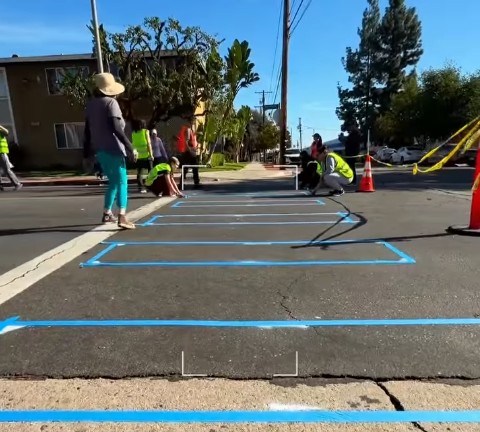Last fall, Streetsblog reported on the complex relationship between economically disadvantaged neighborhoods and the transit-oriented development projects intended to revitalize them. Often, the same people who stand to gain the most quality-of-life benefits from new transit also face the greatest risk of being displaced by the rising property values associated with TOD.
Such is the quandary facing some communities along the Central Corridor light rail project in Minnesota. The 11-mile line between the downtowns of Minneapolis and St. Paul originally called for 16 stations, spaced half a mile apart at either end, but spaced up to a mile apart in some places – including in the high-poverty, predominantly minority neighborhoods of Frogtown and Midway in St. Paul. Initially, planners claimed that adding stops in those areas would jeopardize the project by tipping the Federal Transit Administration’s cost effectiveness rating into unfavorable territory. However, a grassroots campaign called “Stops for Us” took their case directly to FTA Administrator Peter Rogoff, and in January 2010 the agency altered its priorities so that cost effectiveness alone could no longer disqualify an otherwise sound transit project from funding under the New Starts and Small Starts programs.
But now that these neighborhoods, among St. Paul’s poorest, were getting their transit stations, what could be done to prevent them from being gentrified out of existence by jumps in property value? This was the question that the Healthy Corridor for All Health Impact Assessment [PDF], published in December, intended to answer.
The health impact assessment (HIA), which was completed by PolicyLink with the cooperation of local community groups ISAIAH and Take Action MN, “judges the potential, and sometimes unintended, effects of a policy, plan, program or project on the health of a population.” It’s roughly analogous to an Environmental Impact Statement, but with an emphasis on human factors such as “community health, health inequities, and underlying conditions that determine health” rather than an EIS’s impersonal approach to quantifying the effects of a given project.
The report authors lay out a plan to ensure that the new transit line pays dividends for current residents. “Having largely been the victims of disinvestment,” the foreword reads, “they are still hungry to take advantage of this new investment as long as they can be sure that their communities will benefit.”
The report confirmed much of what Streetsblog surmised last October: The communities along the Central Corridor are at risk of displacement.
Among the report’s other revelations:
- Fully one quarter of Central Corridor residents are foreign-born.
- The education-employment mismatch in the Central Corridor is such that the jobs expected to accompany TOD demand an educational attainment greater than many residents possess.
- 83 percent of all businesses along the corridor are small businesses, accounting for 38 percent of all employees of businesses on University Avenue (over 4000 employees).
- University Avenue businesses will see an 87 percent reduction in on-street parking due to light rail construction and implementation.
The HIA recommended the following actions to offset the risks to vulnerable communities along the CC LRT line:
- Institute a community equity program, recapturing a portion of the increased value of development sites close to proposed light rail stations to help cover the cost of reserving some of the housing on these sites for lower-income households. Residential and mixed-use developments would either have to meet a threshold percentage of affordable housing, or else, by paying in-lieu fees to the Housing Trust Fund for example, assist in creating permanent affordable housing elsewhere.
- Write a commitment to affordable housing into law, by specifying affordable housing objectives as a purpose of the “T”-designated (for Traditional neighborhood) zoning that will apply to the Central Corridor. Once the requirements are written into the zoning code, they can be better enforced by city authorities.
- As an alternative (or complement) to the community equity program, the report recommends the awarding of density bonuses or modified parking requirements for developers who commit to a providing a certain quantity of affordable housing. The greater the share of affordable housing, and the greater degree to which that housing is affordable, the more allowances could be made to developers to exceed the maximum density prescribed by the zoning code.
- To defray anxiety stemming from the sudden reduction in on-street parking, adopt regulations that would allow use of undeveloped parcels for temporary parking lots. (There is no word on just how temporary these parking lots would be, however.)
The report also recommends a strategy, called "first source hiring," to require construction contractors to first submit a list of job openings to a city agency, which could then refer applicants from among local residents and track compliance with hiring practices.
The report’s authors are already having an effect. Even before the final version of the report was published, the St. Paul City Council voted in April to study the feasibility of the community equity program and density bonus incentives. In addition, the report’s recommendations could very well find their way into the greater Twin Cities’ regional planning process, which is currently being restructured. From there, the Central Corridor could become a national example of successful integration of transportation and housing policies with an emphasis on equity.








